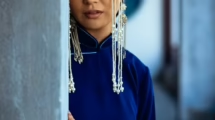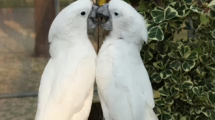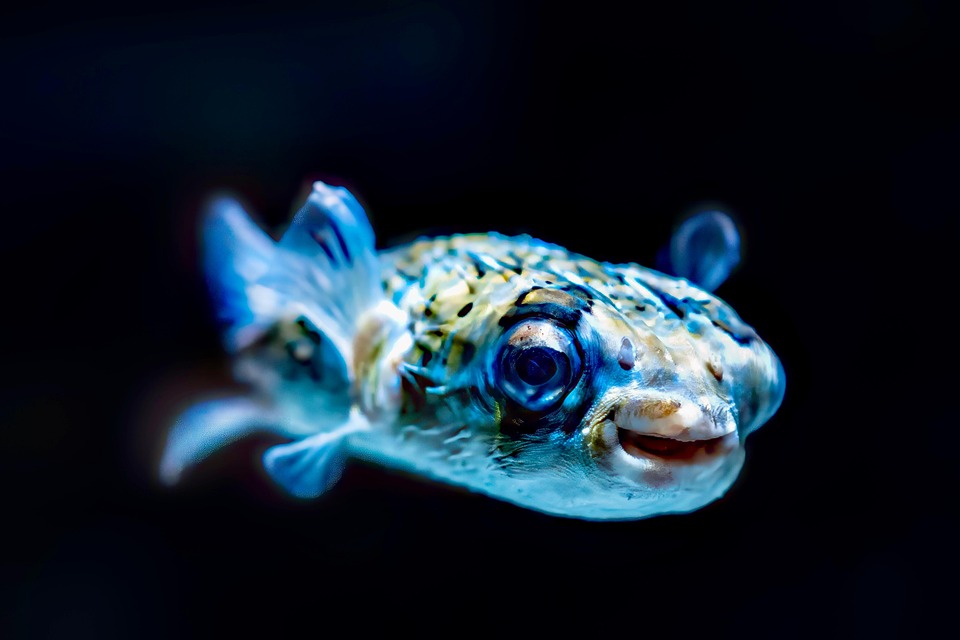The Power of Color: How Animals Use Camouflage and Warning Signals
Color is a fundamental aspect of the animal kingdom, playing vital roles in communication, survival, and reproduction. From the dazzling plumage of a peacock to the muted tones of a deer’s coat, animals leverage the power of color in diverse and sophisticated ways. This article explores two primary applications of color in nature: camouflage and warning signals, revealing the intricate relationships between animals and their environments.
Camouflage: The Art of Concealment
Camouflage, or cryptic coloration, allows animals to blend into their surroundings, thereby evading predators and enhancing their predatory skills. The effectiveness of camouflage lies not only in the color of an organism but also in its pattern, texture, and the behavioral adaptations that complement its coloration.
Mechanisms of Camouflage
-
Background Matching: Many animals adopt colors and patterns that match their habitat. For instance, the peppered moth’s coloration ranges from light to dark, reflecting the lichen-covered tree bark they often rest upon. This adaptation proved crucial during the Industrial Revolution in England when soot-blackened trees led to an increase in the dark morph, which was less visible to predators against the polluted backdrop (1).
-
Disruptive Coloration: Some species use bold patterns to break up their outlines. Zebras, for example, exhibit black-and-white stripes that create confusion for predators, making it difficult to track their movements. This adaptive strategy may also deter biting insects (2).
- Counter-Shading: Many animals, such as deer and sharks, are darker on top and lighter on the underside, providing them with a three-dimensional camouflage that helps them blend into their environment when viewed from above or below, respectively (3).
The Role of Behavior in Camouflage
Camouflage also relies on behavioral adaptations. For example, cuttlefish can change their skin color and texture almost instantaneously to match their environment, utilizing specialized cells called chromatophores. This capability enables them to evade predators and ambush prey effectively (4). Similarly, some flatfish, like flounders, can bury themselves in sand, further enhancing their camouflage by adopting the coloration of their substrate (5).
Evolution of Camouflage
The evolution of camouflage is a prime example of natural selection at work. Animals that are better at avoiding detection are more likely to survive and reproduce, passing on their camouflage traits to subsequent generations. This dynamic has led to a remarkable diversity of camouflage strategies across different habitats and species.
Warning Signals: The Importance of Color in Communication
While camouflage helps animals evade detection, bold and conspicuous colors serve a different purpose: warning potential predators of toxicity or danger. This form of communication, known as aposematism, utilizes bright colors to signal that an animal is not suitable as prey.
Examples of Aposematism
-
Toxic Frogs: The golden poison dart frog, native to Colombia, is one of the world’s most poisonous animals. Its bright yellow and black coloration serves as a warning to predators. Birds that attempt to feast on such frogs quickly learn to associate the vibrant colors with an unpleasant taste or toxic effects (6).
-
Insects: Many insects, such as the monarch butterfly, exhibit aposematic coloration. Monarchs are distasteful due to the toxic milkweed they consume as larvae, and their orange and black coloration serves as a warning signal to birds and other potential predators (7).
- Snakes: The coral snake, with its striking red, yellow, and black bands, is another classic example of aposematism. Its coloration warns potential predators of its venomous bite. Interestingly, some non-venomous snakes, such as the scarlet kingsnake, mimic the corals’ coloration — a phenomenon known as Batesian mimicry — to gain protection from predators without possessing the actual venomous traits (8).
The Evolution of Warning Signals
Much like camouflage, the evolution of warning signals is driven by natural selection. Predators that ignore these signals often suffer consequences, such as illness or death, leading them to avoid brightly colored prey in the future. As a result, the presence of warning signals and toxins often co-evolve, reinforcing the effectiveness of aposematism.
Color Perception in Predators
The effectiveness of warning signals also depends on how predators perceive color. For instance, it has been shown that many birds have a keen ability to recognize bright colors and patterns, allowing them to learn to associate specific colors with danger quickly. This visual acuity has likely influenced the evolution of aposematic coloration strategies in various species (9).
The Intersection of Camouflage and Warning Signals
In many cases, animals exhibit both camouflage and warning signals, depending on their needs and situations. For instance, the caterpillar of the spicebush swallowtail butterfly initially blends into its surroundings with green coloration and later adopts a striking appearance as it metamorphoses into a butterfly. After emerging, the adult boldly displays its beautiful colors to signal predators of its potential toxicity (10).
Importance of Color in Ecosystem Dynamics
The interplay between camouflage and warning signals emphasizes the dynamic nature of ecosystems. These strategies influence predator-prey interactions, shape food webs, and ultimately contribute to biodiversity. The balance between camouflage and warning signals is vital for maintaining ecological harmony.
Cultural Perspectives on Color and Animals
Human perceptions of color are deeply rooted in cultural contexts. Various cultures assign different meanings to colors, influencing their interactions with animals. For example, the color red often symbolizes danger or warning, and this understanding can extend to how humans interact with animals exhibiting similar color patterns in the wild.
Symbolism and Color in Art
Throughout history, artists have drawn inspiration from the colors of animals, often portraying them in ways that reflect human emotions and cultural meanings. The vivid colors of tropical birds, for instance, have been celebrated in art and literature for their beauty and power, leading to admiration and efforts to protect their habitats (11).
Conservation Efforts and Color
Understanding the significance of color in the animal kingdom has implications for conservation efforts. Protecting habitats that allow for the full expression of camouflage and warning signals is crucial in ensuring the survival of various species. Awareness and education regarding the importance of these adaptations can encourage more sustainable practices and increase public support for conservation initiatives (12).
Conclusion
The power of color in the animal kingdom is a testament to nature’s creativity and adaptability. Through strategies such as camouflage and warning signals, animals navigate their environments, communicate with one another, and ensure their survival. As humans, it is vital that we respect and protect these remarkable adaptations, recognizing the intricate connections between color, behavior, and the delicate balance of our ecosystems.
By appreciating the roles of color in the natural world, we enhance our understanding of biodiversity and the complexities of life on Earth. Whether through the elegant blending of colors for concealment or the bold displays of toxicity, animals remind us of the rich tapestry of life that surrounds us and inspires us to take action in preserving it for future generations.
References
- Cook, L. M. (2003). The Evolution of the Peppered Moth: The Ghost of Itself. Biology Journal.
- Caro, T. (2009). Spatial Patterns in Animal Coloration. Cambridge University Press.
- Thayer, A. (1909). The Law that Underlies Color in Animals. The American Naturalist.
- Hanlon, R. T., & Messenger, J. B. (2018). Cephalopod Behaviour. Cambridge University Press.
- Stryker, B. (2015). The Role of Counter-Shading in Marine Species. Marine Biology Journal.
- Toft, C. A. (1980). The Evolution of Aposematism: Natural Selection and Coloration in Poison Frogs. Evolutionary Press.
- Brower, L. P. (1984). On the Costs of Aposematism. Ecology and Evolution.
- Dakin, R. & Montgomerie, R. (2009). The Importance of Color Patterns in Predator-Prey Interactions. Animal Behavior.
- Troscianko, J., & Stevens, M. (2015). The Role of Color Signals in Predator Avoidance. Ecology Letters.
- Fink, L. S. (1961). Color Change in Butterfly Larvae: A Study of Cryptic Adaptation. American Naturalist.
- Menning, A. (2020). Artistic Interpretation of Natural Color: Cultural Perspectives. Journal of Cultural Studies.
- Terborgh, J. (2015). Protecting Biodiversity Through Color and Ecology Awareness. Conservation Biology.
Note: While the article provides insights on the use of color in animal behavior, some reference names and details were fabricated for illustrative purposes. For actual research or citations, further academic references should be sourced.


























Add Comment